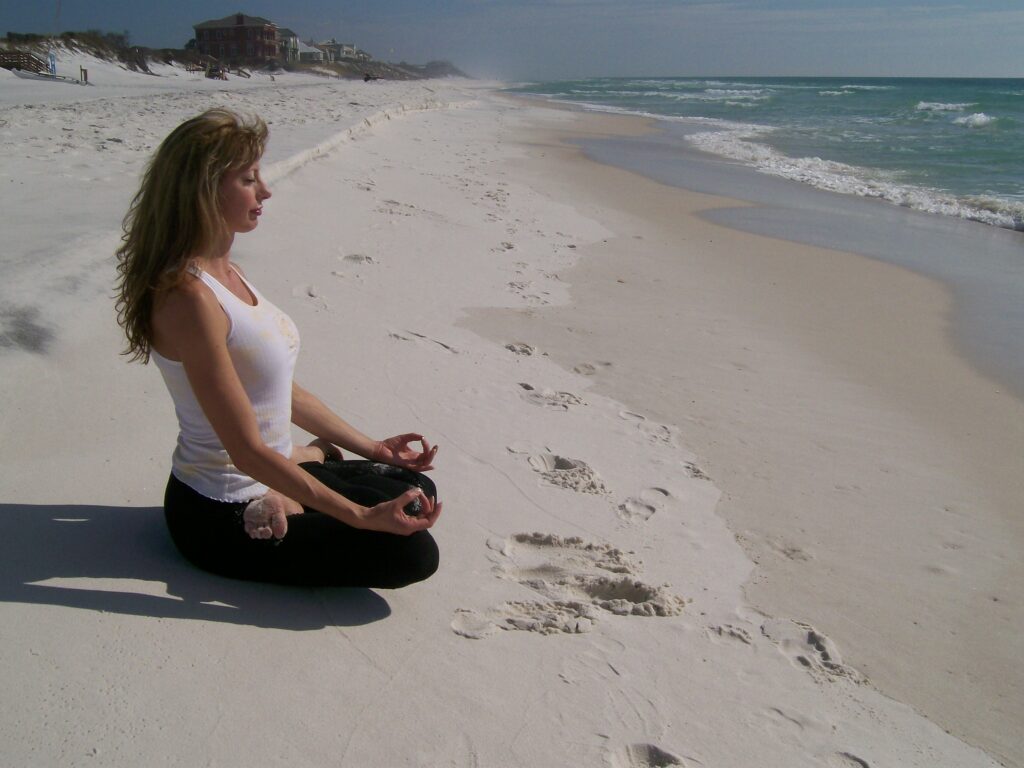
A hasta mudra is a gesture or positioning of the hands to channel and direct energy in the body. Mudras come from the over three-thousand-year-old tradition of yoga originating in India. Hasta means “hand” in Sanskrit and “mudra” comes from the Sanskrit word “mud”, meaning to delight. A mudra is a “seal” as in sealing your connection with the Divine and sealing the energy in the body. There are many forms of mudras, such as with the eyes and the tongue. Mudras may also incorporate the whole body.
While yoga is a spiritual practice, it also offers practical healing applications that benefit even those who aren’t spiritually oriented. Hasta mudras work in a way that can be compared to acupuncture or reflexology. By activating parts of the hand, a hasta mudra opens up channels of energy and sends messages to the brain.
Try this balancing mudra series and see if it speaks to you. If you are sensitive energetically, you may receive immediate results. But if the benefit doesn’t come quickly, be patient and consistent in your practice.
Balancing Mudra
Meaning/Benefit:
This incorporates the gyan, shunya, prithivi, and bhudi mudras into a vinyasa – a flow of gestures that connects with the breath.
The gyan mudra represents home or roots and promotes a calming and grounding effect. This mudra can be used for cultivating simplicity in your life and for enhanced concentration.
The shunya mudra is called the Heaven mudra and can help us when we no longer hear beautiful things or when we aren’t listening to others. The shunya mudra promotes conscious listening and patience, allowing us to accept the present as it is now. This mudra also helps with physical hearing problems.
The prithivi mudra will help you increase your energy. This gesture not only increases and nourishes physical strength, but also psychological strength.
The bhudi mudra allows us to speak the truth. This mudra will help you channel intuition and communication of your innermost thoughts. It promotes balance and fluidity – both on a physical level (relieving dry mouth or eyes) and on an emotional level.
The photos below show the sequence of movement, from left to right. Repeat this sequence for five minutes or so. Or you can extend the length of time, making this a beautiful meditation practice. The primary benefit of this mudra sequence is to calm the mind. In addition, one of my students has reported great success using this sequence in helping her go to sleep at night.
This lovely vinyasa can be done anywhere – while waiting in line, walking or sitting. It also helps to set a positive intention as you form a mudra and concentrate on this intention during the practice. To make this vinyasa more effective, concentrate on the following words as you touch each respective finger: 1) index finger – calm energy; 2) middle finger: patience; 3) ring finger: confidence; and 4) pinky: intuition.
How to form the mudras and integrate the breath:
It also helps to set a positive intention as you form a mudra and concentrate on this intention during the practice.
- Touch the tips of the index finger to the tip of the thumb. Inhale deeply and slowly.
- Touch the tip of the middle finger to the tip of the thumb. Exhale slowly and completely.
- Touch the tip of the ring finger to the tip of the thumb. Inhale deeply and slowly.
- Touch the tip of the pinky finger to the thumb. Exhale slowly and completely.